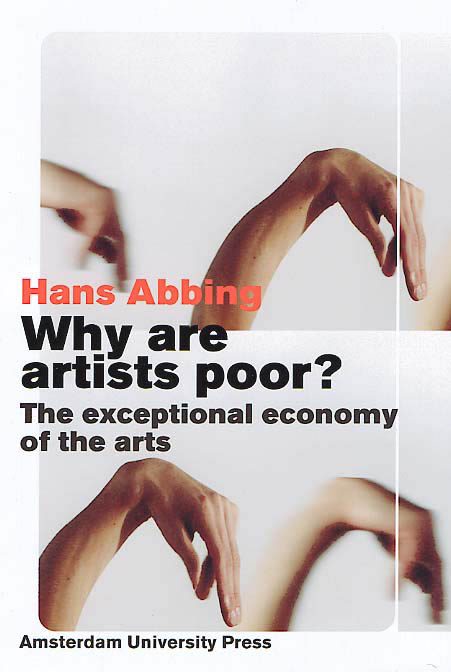Hans Abbing: Why Are Artists Poor? The Exceptional Economy of the Arts (2002)
Filed under book | Tags: · aesthetics, art, art criticism, art history, economics, gift economy, market, money, netherlands

“Most artists earn very little. Nevertheless, there is no shortage of aspiring young artists. Do they give to the arts willingly or unknowingly? Governments and other institutions also give to the arts, to raise the low incomes. But their support is ineffective: subsidies only increase the artists’ poverty.
The economy of the arts is exceptional. Although the arts operate successfully in the marketplace, their natural affinity is with gift-giving, rather than with commercial exchange. People believe that artists are selflessly dedicated to art, that price does not reflect quality, and that the arts are free. But is it true?
This unconventional multidisciplinary analysis explains the exceptional economy of the arts. Insightful illustrations from the practice of a visual artist support the analysis.”
Publisher Amsterdam University Press, 2002
Open access
ISBN 9053565655, 9789053565650
367 pages
PDF (updated on 2019-12-12)
Comments (3)Claire Bishop (ed.): Participation (2006)
Filed under book | Tags: · aesthetics, art, art criticism, art history, art theory, audience, participation, politics, relational aesthetics

“The desire to move viewers out of the role of passive observers and into the role of producers is one of the hallmarks of twentieth-century art. This tendency can be found in practices and projects ranging from El Lissitzky’s exhibition designs to Allan Kaprow’s happenings, from minimalist objects to installation art. More recently, this kind of participatory art has gone so far as to encourage and produce new social relationships. Guy Debord’s celebrated argument that capitalism fragments the social bond has become the premise for much relational art seeking to challenge and provide alternatives to the discontents of contemporary life. This publication collects texts that place this artistic development in historical and theoretical context.
Participation begins with writings that provide a theoretical framework for relational art, with essays by Umberto Eco, Bertolt Brecht, Roland Barthes, Peter Bürger, Jen-Luc Nancy, Edoaurd Glissant, and Félix Guattari, as well as the first translation into English of Jacques Rancière’s influential “Problems and Transformations in Critical Art.” The book also includes central writings by such artists as Lygia Clark and Hélio Oiticica, Joseph Beuys, Augusto Boal, Felix Gonzalez-Torres, Thomas Hirschhorn, and Rirkrit Tiravanija. And it features recent critical and curatorial debates, with discussions by Lars Bang Larsen, Nicolas Bourriaud, Hal Foster, and Hans-Ulrich Obrist.”
Publisher Whitechapel, London, and MIT Press, 2006
Documents of Contemporary Art series
ISBN 0262524643, 9780262524643
207 pages
PDF (updated on 2017-6-19)
Academia.edu (added on 2015-5-6)
Dominic Lopes: A Philosophy of Computer Art (2009)
Filed under book | Tags: · aesthetics, art criticism, computer art, digital art, performance, philosophy, video games

What is computer art? Do the concepts we usually employ to talk about art, such as ‘meaning’, ‘form’ or ‘expression’ apply to computer art?
A Philosophy of Computer Art is the first book to explore these questions. Dominic Lopes argues that computer art challenges some of the basic tenets of traditional ways of thinking about and making art and that to understand computer art we need to place particular emphasis on terms such as ‘interactivity’ and ‘user’.
Drawing on a wealth of examples he also explains how the roles of the computer artist and computer art user distinguishes them from makers and spectators of traditional art forms and argues that computer art allows us to understand better the role of technology as an art medium.
Publisher Routledge, 2009
ISBN 041554761X, 9780415547611
160 pages
review (Joshua Noble, Creative Applications Network)
review (Timothy Binkley, Journal of Aesthetics and Art Criticism)
review (Jim Andrews, CIAC)
PDF (updated on 2013-4-28)
Comments (2)
